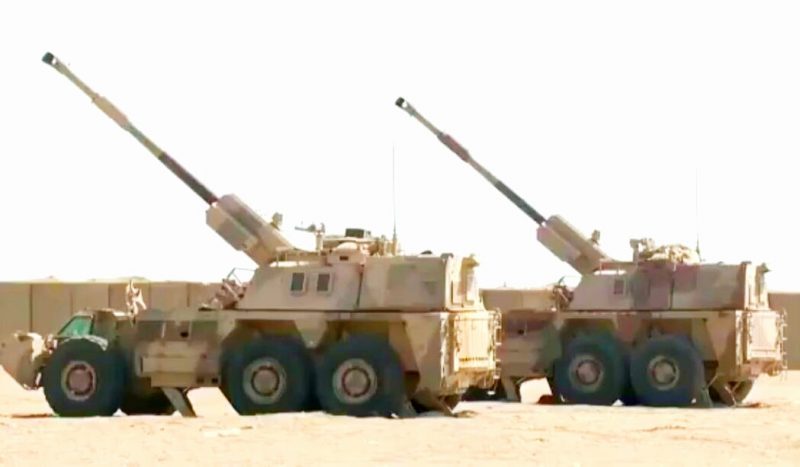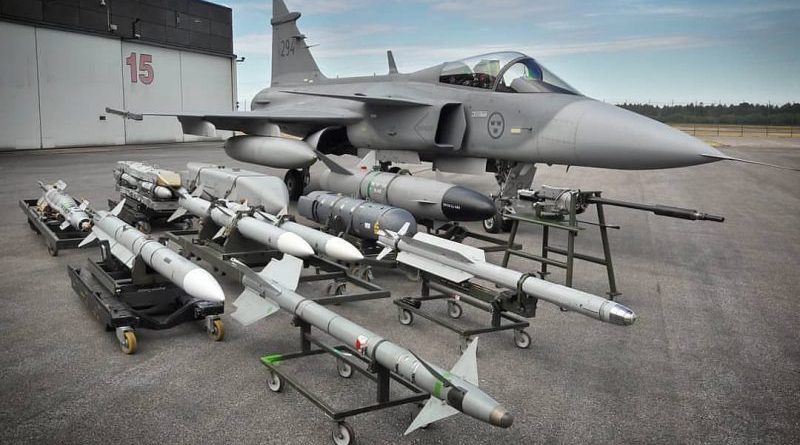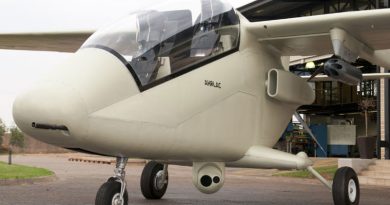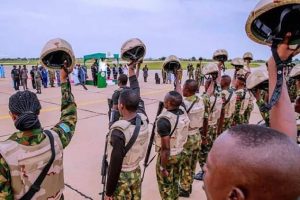Meet the five South African weapons of war Nigeria should fear
For years, there has always been an awkward history behind Nigeria and South Africa’s turbulent relationship.
Since the end of apartheid in South Africa in 1994, both countries have never had an easy relationship, infact, they have often been at loggerheads for different reasons.
However, despite this rivalry, Nigeria once showed solidarity with the black people of South Africa when after obtaining independence from Britain on 1 October 1960, Nigeria mounted pressure on the apartheid regime to stop oppressing the black majority. The Nigerian government even raised funds for the South African liberation cause by imposing a special tax on its workers.
Persistent tensions have remained in bilateral relations between this two countries and these have grown considerably in recent years.
The rivalry between Nigeria and South Africa could be traced to the Mandela era between 1994-1999.
Mandela spoke against the decision by General Sani Abacha to annul the outcome of the 1993 presidential elections which had been won by Chief Moshood Abiola.
Following General Abacha’s action, Mandela persuaded the Commonwealth and the then Organisation of African Unity to ostracize Nigeria. He also called on the international community to boycott Nigerian oil.
Immediately, relations deteriorated between the two African nations. Further down the line, on September 2019, South Africa temporarily closed its diplomatic missions in Nigeria following reprisal attacks by Nigerians triggered by xenophobic violence in South Africa.
There have been similar outbreaks of violence in 2008 and 2015. Although, other African countries were usually affected by the periodic attacks on immigrants.
Even with the ongoing tensions, it is very unlikely that the South Africa will ever directly face off against Nigeria because a shooting war would certainly end poorly for all Africa.
Given the strength of South Africa’s technological capacity, its ability to hurt Nigeria will depend on its willingness to leverage on its naval power, economic power and diplomatic clout.
On the other hand, modern Nigeria still possesses a formidable arsenal of both strategic and tactical defensive weapons. Moreover, the state of South Africa’s conventional forces have greatly atrophied due to repeated budget constraints.
Notwithstanding, Nigeria would be hard-pressed if the unthinkable ever occurred.
Here are five of the weapons that South Africa could uses to maintain pressure on Nigeria.
Type 209/1400 class attack submarines (SSK)
South African Navy purchased three new Type 209/T.1400 class submarines (SSK) between 2006 and 2008, replacing Daphné-class boats.
The submarines were renamed ‘Heroine’ class after notable female personalities in South Africa.
They were designed by Howaldtswerke-Deutsche Werft of Germany, crewed by 30 sailors and officers, with a displacement of 1,450t when surfaced and 1,600t when dived.
The Type 209/1400 submarine has a maximum speed of 10kt surfaced and 22kt dived.
This class of attack submarines are armed with eight 533mm bow torpedo tubes, with up to 14 torpedoes in stowage.
The fire control for the torpedoes is handled by Atlas Elektronik ISUS 90 integrated sensor underwater system. The submarine is fitted with a non-hull-penetrating mast supplied by Carl Zeiss Optronics which includes a high-definition resolution colour TV camera and third generation thermal imager.
For undersea target detection, it is fitted with an Atlas Elektronik CSU 90 hull-mounted passive and active search-and-attack sonar and flank sonar arrays.
Acquiring the Type 209/1400 attack submarine immediately provides the South African Navy with a useful lethal underwater weapon for deep bluewater patrol.
This is particularly significant because Nigeria (and to a large extent West Africa) currently has no capability to counter this threat.
If deployed, this boats could literally reduce Nigeria’s naval capabilities in a short time.
Read: Best navy in Africa today
Valour-class guided missile frigates
The Valour-class frigate is a multi-purpose and multi-capable vessel suitable for executing various naval missions.
Four Valour Class MEKO A-200 multi-mission frigates were acquired by the South Africa, they are the workhorses of the South African navy.
Two of the vessels were built by Blohm & Voss at Hamburg, and the other two by HDW at Kiel.
Although, a large number of South African defence companies known as the SA Defence Corvette Group, combined the ship’s electronic and weapons subsystems into a fully integrated combat suite.
It is also equipped with the African Defence Systems’ Combat Management System and Navigation Subsystem.
The Valour class was designed with stealth features like angled hull, uncluttered superstructure to reduce the radar cross-section.
It armaments load out includes 2x four-cell launchers for MBDA MM 40 Exocet surface-to-surface missiles. The anti-ship sea-skimming missile has a range of 70km and uses inertial guidance for the cruise phase of the trajectory and then active radar homing.
Two eight-cell vertical 16 Umkhonto surface-to-air missiles are fitted. A 35DPG 35mm dual purpose gun from LIW division of Denel. The 35DPG can destroy cruise missiles at ranges of at least 2.5km and high speed missiles at range 1.5km.
The Valour class of vessels can undertake various combat roles like interdicting hostile air, surface and sub-surface threats in the deep battle space. It can also support of land forces, escort allied shipping and conduct area protection of allied forces.
This type of ship out-classes every warship in Nigeria’s arsenal except Nigeria’s unserviceable Meko 360 class multipurpose frigate.
For that reason, the Valour class frigate along side the Type 209 submarine will spearhead any future naval engagement against Nigeria.
SAAB JAS 39 Gripen C/D multirole fighter jet
The JAS-39 Gripen C/D multirole fighter jet is an excellent low-cost fourth-generation fighter. Originally developed in Sweden the 1980s.
It is a highly capable aircraft, which is capable of performing an extensive range of air-to-air, air-to-surface and reconnaissance missions employing the latest weapons and technologies.
In a single sortie, the Gripen can perform air-to-air, air-to-surface and reconnaissance seamlessly if needed.
While not a true stealth fighter, the Gripen offers reduced radar cross-section as a result of its design features.
The aircraft’s full authority digital ‘Fly-By-Wire’ flight control system, forward canard and delta wing configuration provides unrivalled performance for both evasive manoeuvres and close engagement.
G6 Rhino 155 mm artillery

The G6 Rhino is a 155mm long-range gun developed and produced by the LIW division of Denel, it is mounted on a chassis made by Alvis OMC (now part of BAE Systems Land Systems).
It is named after the indigenous African Rhinoceros, a ferocious beast known to be destructive at the slightest provocation.
The Rhino is operated by a crew of six ( driver, commander, gun layer, breech operator, ammunition loader and ammunition handler.)
The 155 mm G6 has an its impressive firepower, range, mobility, speed, accuracy and endurance, it remains at the front of the pack when compared to other wheeled and tracked self-propelled howitzer vehicle.
It can fire its weapon 50km down range using velocity enhanced long range projectiles.
The system is offered with the Somchem modular charge system (MCS) which can fire the Naschem M2000 Assegai system which includes the V-LAP projectile.
With the V-LAP projectile, the system has a range of 67km and a rate of fire of eight rounds a minute. Up to six rounds can be fired simultaneously to hit the same target using the Thaled ADS AS2000 artillery target engagement system.
On the battlefield, the G6 Rhino will out-range, out-maneuver and out-shoot most enemy artillery found today.
This weapon was also designed to use its artillery gun in a direct firing mode, which can still defeat most composite armor in use today.
For its own self-defense, the G6 is fitted with eight launchers that fire 81mm smoke grenades. The high strength armour-plate hull protects the crew against small arms fire and shell splinters.
Also, the crew are protected against landmine blast, 20mm gunfire from the front, and by 7.62mm ammunition from all sides.
BATELEUR FV2 127 mm Multiple Rocket Launch System
The Bateleur FV2 is named after an eagle native to the open savannah and woodlands of Sub-Saharan Africa.
It is a further development of the Valkiri.
As a result of the large distances that need to be traveled, southern African battlefields favors a wheeled configuration.
It is armed with 40 launching tubes for 127 mm rockets, which are arranged in two packs. A standard rocket is 2.95 m long and weights 62 kg. The Bateleur fires two types of rockets, HE-FRAG and cluster. The cluster warhead is packed with HE-FRAG submunitions, anti-tank or anti-personnel mines.
The Bateleur FV2 is operated by a crew of five, while it is reloaded manually by the crew members. Reload rockets are carried by an escorting truck. It takes around 15-20 minutes to reload all rockets.
Its mission is to engage in counter-battery strikes against hostile artillery and air defences as far as 36 km (22 mi) away. The weapon can fire up to 40 127mm pre-fragmented high explosive warheads to ranges of 7.5km to 36km, firing up to 1 rocket per second.
It was designed to saturate a football field sized area with HE rockets within seconds



